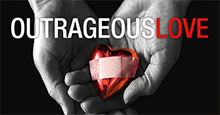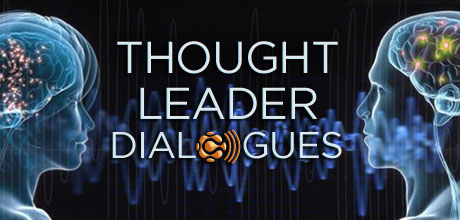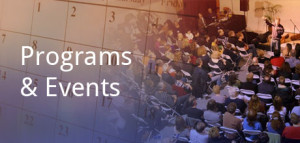The Mystery of Love

The core ideas in The Mystery of Love began germinating when Marc encountered a Talmudic passage, some twenty-five years ago, which described the sexual drive as the Lion of Fire residing in the holy of holies in the temple. As Marc Gafni notes on the Scholar’s page, Raphael Pattai’s work on the Temple and Eros, Saul Lieberman’s important identifications between the mystery of the Song of Songs and the Holy of Holies in the Temple, as well as Idel’s deployment of the term Kabbalistic Tantra all were important to him.
However, the essay that truly opened up Marc Gafni’s understanding of this topic was written by one Chaim Eisen and published in an obscure Orthodox Journal of Jewish Thought. Several years later, Marc Gafni’s one-time colleague gathered many of the sources suggested by Raphael Pattai, Saul Lieberman, Yehuda Liebes, David Biale, Moshe Idel, Yitzhak Ginsberg and more, adding his own original readings besides. In the Scholar’s page of The Mystery of Love, Marc Gafni freely and gladly credited all of these folks. Almost all of The Mystery of Love (other than the first few pages, which rehearse the aforementioned material in a new way) however, is concerned with three key topics that to the best of our knowledge is not mentioned let alone substantively addressed by any of the above writers.
The first theme is the nature of the Eros. In Chapter Two, Marc Gafni devotes himself to this question and identifies four faces of Eros, which are in effect the four faces on the chariot of Ezekiel. They are Wholeness, Interiority, Presence, and Yearning. The second topic addressed is the relation of the sexual to the erotic. This is the theme of the third chapter, which is the key chapter in the book. The third theme, which is addressed in the remaining seven chapters, is the ten precise and specific ways in which the sexual itself models the erotic.
Marc Gafni initially titled the book On the Erotic and the Holy, but was overridden by the publisher who insisted on the name The Mystery of Love. However, when it came time to release an audio workshop of the material in the book The Mystery of Love, the name On the Erotic and the Holy was adopted.
The book contains a significant addendum with forty pages of primary source footnotes in Kabbalah prepared by Avraham Leader and Marc Gafni.
Upon its release, the book was endorsed by Kabbalah scholar Elliot Wolfson, whose blurb appears in the softcover edition. Elliot Wolfson and Marc Gafni did not know each other. Elliot read the book and generously contacted Marc to offer his praise for the book. His initial note to Marc Gafni in this regard is cited in the new softcover edition of the book.
The original book was nine hundred pages. This manuscript needed to be reduced to 315 plus footnotes to allow for publication with a mainstream publishing house, Simon & Schuster. God willing, Marc Gafni will publish the full version of the book in the not too distant future.
Table of Contents
- Introduction: The Dance of Eros
- PART I:
- ONE: Sex in the Temple
- TWO: Eros, Not Sex: The Faces of Eros
- THREE: Sex Symbols
- PART II:
- FOUR: Imagination
- FIVE: Perception
- SIX: Giving: Self-Transcendence
- SEVEN: Giving Up Control
- PART III:
- EIGHT: Circle and Line: The Dance of Male and Female
- NINE: Lishmah, for the Sake of the Name
- TEN: Story, Voice, Creativity, and Pleasure
- ELEVEN: The Harlot by the Sea
- TWELEVE: Time
- THIRTEEN: Union
- EPILOGUE
- NOTES
- SCHOLAR’S PAGE
- ACKNOWLEDGMENTS
- ABOUT THE AUTHOR
The Mystery of Love – Scholar’s Page
Hebrew Tantra is a term coined by a cluster of people in the last thirty years. The anthropologist and Hebrew scholar Raphael Pattai, the Kabbalah scholar Moshe Idel, others, and myself have all used the term independently. Each person is referring, in a different way, to the sexual symbolism that lies at the core of the Holy of Holies, the Secret of the Cherubs.
What I mean by Hebrew Tantra is ancient Hebrew wisdom rooted in the esoteric mysteries of Solomon’s Temple. These teachings understood implicitly that the sexual models the erotic. They viewed the sexual act itself as a great sacred mystery that reflects the deepest truths of the spirit. Most of these teachings are hidden, for two reasons: first, they are scattered among vast amounts of ancient material, with no obvious way of tracing the ideas; and second, the mysteries are embedded in the internal symbolism of the Kabbalah, a code virtually inaccessible to the unversed.
Yet in all quests after the mysteries, the first source is never textual; it is, rather, the soul itself. In the words of Job, which take on dual meaning in this context, “Through my flesh I vision God.” At an early age, I was convinced that religion had lost what I believed must have been its original erotic vitality. I knew that the sexual, if liberated and ethically expressed, must somehow hold the mystery of return to the much larger than sexual Eros. Moreover, I was convinced that the vitality of paganism and the goddess cults, stripped of their non-ethical practice, had much to offer us in the renewal of the old religion for our postmodern souls. And yet, a prima facie reading of the sources did not seem to support my intuitions.
The first hint at another more profound if esoteric reading of the sources―one that alludes, however vaguely, to sexuality as an erotic model―came when I was twenty-two years old and studying a text of Tzadok the Priest cited in a work by Gedalia Schor. It enigmatically alluded to the secret of the cherubs, and cited the key Talmudic texts that I adduce in the second and third chapters of this work. In Michtav Me’Eliyahu, Eliyahu Dessler makes scattered veiled references in the same direction. In the academic world, Raphael Pattai’s 1947 book, Man and the Temple, also contained important hints. Helpful too was an excellent short monograph by Saul Lieberman on the esoteric mystery of the Song of Songs, to which I was referred by Daniel Abrams. Similarly helpful was Pattai’s later work Hebrew Goddesses, as well as the work that greatly influenced Pattai, The White Goddess, by Robert Graves. Two recent monographs, Ohad Ezrahi’s Shnayim Keruvim, Heb. 1997, and Moshe Eisen’s You will be like G-d: Chazal’s Conception of the Yetzer Hara, 1992, draw on this material in referring to the Eros as the central mystery of the temple. The same is true of a number of articles by Moshe Idel, most important among them being Sexual Praxis in Kabbalah.
Although I have not seen it, Idel’s forthcoming work Kabbalah and Eros will undoubtedly open up new and important vistas. What is true of virtually all the works cited here is that while they note that there is a mystery and that it is connected to sex, Eros, and the Temple, they do not examine the nature of Eros, using it for the most part as a kind of evocative catchphrase and often not distinguishing between it and sexual vitality. Similarly, they do not suggest sex as a model for Eros, nor do they make our essential suggestion that the term Shechina in many passages is virtually identical to Eros, or that the exile of the Shechina is the exile of the erotic into the sexual. Most importantly, however, they do not unpack distinct and specific paths of Eros that are modeled by the sexual. And yet, Eros in one of its important expressions is interconnectivity, and I happily acknowledge my debt to all the important work that informed my thinking in this book.
To the best of my knowledge, this work is the first modern attempt not only to establish the existence of such an esoteric body of knowledge, but also actually to gather and interpret the essence of Hebrew Tantra.
The ten paths discussed here are unpacked in a more scholarly manner in a significantly longer forthcoming work on the subject, The Erotic and the Holy. In this work, we approach the material not in an academic scholarly sense, but as part of the chain of tradition, receiving, interpreting, and adding to the ancient wisdom.
Editorial Reviews
Amazon.com
Author Marc Gafni always intuitively felt that the erotic must have a powerful link to the sacred, but not until he committed himself to the study of Hebrew mysticism was he able to articulate this link. According to Gafni, most people assume that eros is just another word for sex. “The fact that we so often confuse eros with sex merely reminds us of how distant we are from true erotic engagement,” he writes. And herein lies Gafni’s mission for this book.
“Eros is to be fully present to what is,” he declares. “It is to open your eyes and see for the first time the full beauty and gorgeousness of a friend, to smell the richness of an aroma, to feel the fullness of throbbing desire, and to taste the erotic experience that connects you with every being. It is to feel the palpable love that dissolves the walls of ego, anger, and anxiety.”
Drawing from the ancient texts of the Kabbalist tradition, Gafni unravels the wondrous relationships among sex, eros, love, and the sacred. He calls this discussion “Hebrew tantra,” yet readers of all denominations will find this an inspiring book on sacred sexuality. As in his previous book Soul Prints, Gafni remains eloquent and intelligent while also offering accessible insights. Don’t expect advice on sexual positions or eye-gazing foreplay. Rather, he uses brief essays, ancient teachings, and heartfelt wisdom to help us nurture our erotic potential even as we face our aging bodies and shadowy desires. At its core, this is a worthwhile book about living with great love and great spirit, written by an author who obviously does both.
–Gail Hudson (This text refers to an out of print or unavailable edition of this title.)
From Publishers Weekly
From the author of Soul Prints comes this book about the profound link between sex and spirituality. Gafni, a Kabbalah scholar, television host and rabbi, argues thoughtfully and thoroughly that the erotic and the holy are one and the same. If readers can get past the initial shock of Gafni’s claim that the cherubs on the Ark of the Covenant in the Holy of Holies were in fact locked in sexual embrace (a provocative suggestion supported by some Kabbalistic texts), then the book is sure to be a mind opener. Gafni writes: the secret of the cherubs is that sex is our spiritual guide. He carefully reclaims the word eros, broadening it from the narrow sexual meaning it has today to encompass a larger life force: eros is the source of all creativity and pleasure. In this context, eros is synonymous with the divine and the sacred. Sexuality (e.g., as portrayed in the Old Testament’s Song of Solomon) is a model for the larger concept of eros and holiness. Gafni meticulously builds on this central argument with generous helpings of parables and stories from mystical texts, observing that we often lead nonerotic (although not necessarily nonsexual) lives. He invites readers to learn to fill their emptiness with eros rather than its pale imitations. Those frustrated with the spare documentation of his argument can look forward to his upcoming two-volume scholarly work expanding on the material in this fascinating book.
Copyright 2003 Reed Business Information, Inc. (This text refers to an out of print or unavailable edition of this title.)
Link to Purchase:















